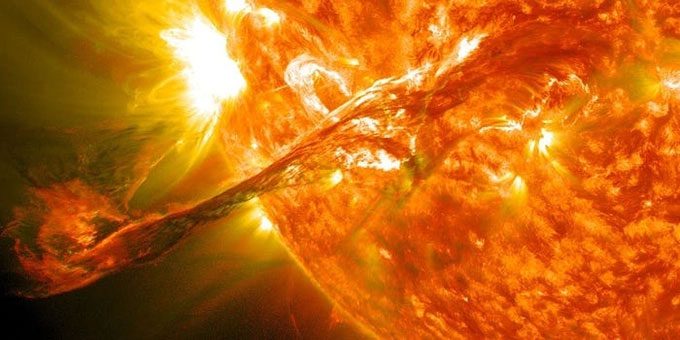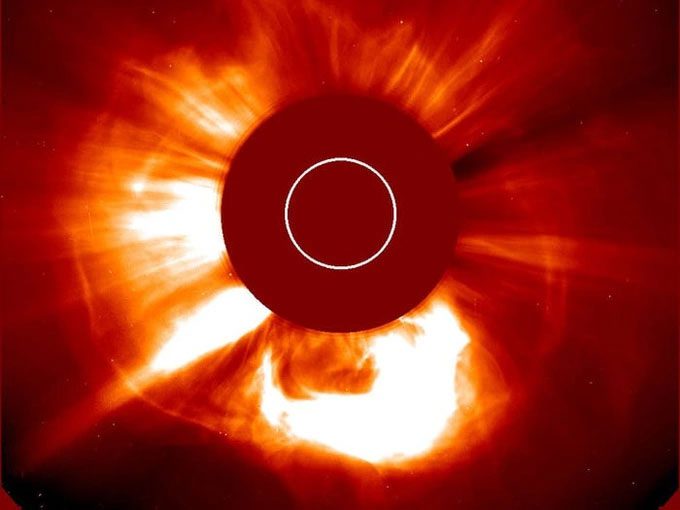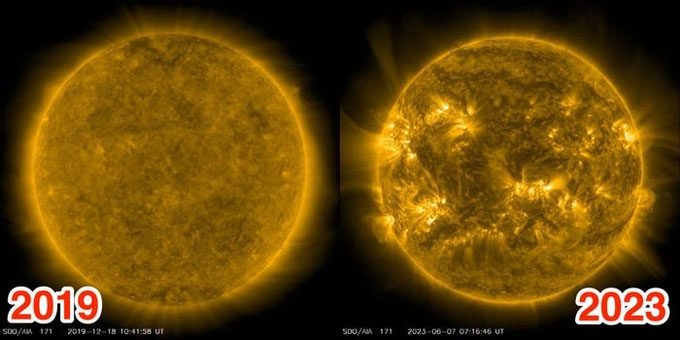The surface of the Sun is always bubbling with energy, creating energy bubbles. When these bubbles burst, streams of energy sweep across Earth.
Typically, solar energy streams either veer away from Earth or are too weak to penetrate Earth’s magnetic field, causing little damage. However, from time to time, the Sun generates a storm powerful enough to tear apart this magnetic “shield.”

A solar flare erupting from the surface on August 31, 2012. (Image: NASA’s Goddard Space Flight Center).
When a solar storm strikes, it causes chaos within technological systems, “crippling economies and endangering the safety and livelihoods of people around the world,” according to NASA.
Fortunately, such energy storms are rare. However, experts indicate that the Sun is continuously active before reaching a new peak, and a solar storm may likely “dock” with Earth in the coming years.
At that time, three solar phenomena—solar flares, coronal holes, and coronal mass ejections—could unleash high-speed particles that disturb Earth’s magnetic field, gradually stripping away its protective ionized layer.
|
Daniel Verscharen, an Associate Professor of Space Physics and Climate at University College London, notes that geomagnetic storms at their peak can disrupt electrical grids on Earth.
The Carrington Event of 1859 is regarded as the strongest solar storm ever recorded. During this event, telegraph operators were shocked by their own equipment, and fires erupted at telegraph stations as current from the storm flowed through the wires.

A massive solar flare like this one heralded the solar storm of 1989. (Image: NASA’s Solar Dynamics Observatory).
Another notable storm occurred in 1989. Although this storm was weaker, it caused more chaos. At that time, we were becoming increasingly dependent on electrical grids and global communications.
The power surge caused a widespread blackout in Quebec, Canada, lasting 12 hours, and knocked out shortwave radio stations. At the time, Canadians mistakenly believed the Soviet Union was jamming radio signals—a misunderstanding that could have been dangerous during the Cold War.
However, we should not be lulled into a false sense of security that solar storm consequences are limited. Since the 1990s, our reliance on communications, satellites, electrical grids, and other critical infrastructure has increased exponentially.
If a solar storm were to occur today, the world could witness widespread blackouts, satellites being knocked out of orbit, and crucial communication networks being disrupted, according to NASA.
The Sun’s activity is becoming “more vibrant,” and scientists are particularly interested in the solar cycle. It appears that the Sun may be more active than it was two decades ago.
Additionally, according to Professor Verscharen, the Sun’s magnetic field is also directed southward. This means that charged particles sent from the Sun are more likely to carry opposite charges to Earth’s magnetic field, allowing particles emitted from the Sun greater chances of breaching Earth’s defense barrier.

A simulated image showing the Sun four years ago compared to now. (Image: NOAA).
Currently, while solar storms have not yet occurred, strong solar flares have caused some damage.
Elon Musk’s SpaceX lost 40 Starlink satellites due to a solar storm that expanded Earth’s atmosphere, increasing drag on the satellites and causing them to burn up before they could be used.
Professor Verscharen states that the solar cycle is expected to peak around 2025, but this does not necessarily mean a solar storm will occur at that time; it could happen later.
Until then, countries at high latitudes such as the US, Canada, Sweden, and the UK should remain particularly vigilant. The professor notes that the higher the latitude, the more susceptible a country is to solar phenomena.
However, there are various ways to mitigate the effects of severe storms. If warned in advance, operators can implement measures to protect infrastructure from the worst impacts of solar storms. They can strategically shut down electrical grids, reroute aircraft, or move satellites.
Scientists are racing to understand what makes solar activity stronger, with the aim of improving warning systems.
The European Space Agency is also working to launch the Vigil satellite, which is expected to trail behind the Sun to detect sunspots and coronal holes that may be hazardous days before they come into view of Earth.


















































